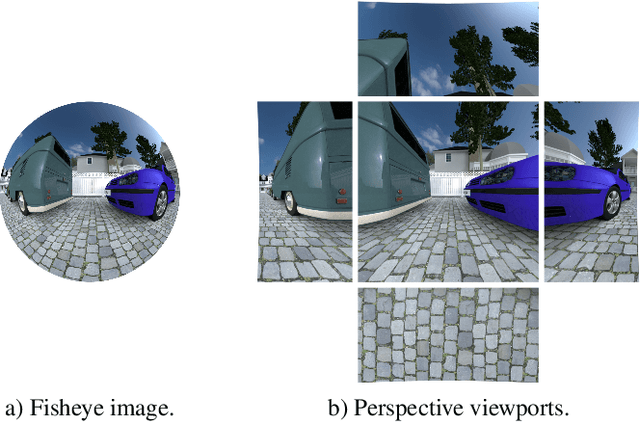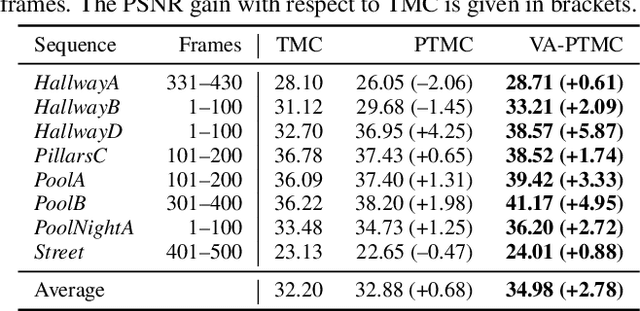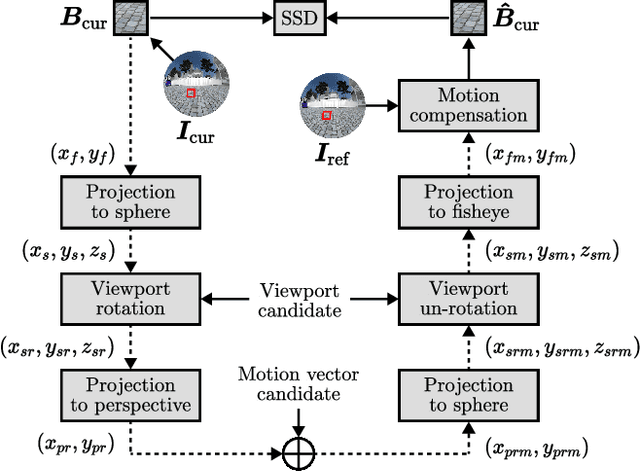A Novel Viewport-Adaptive Motion Compensation Technique for Fisheye Video
Paper and Code
Feb 28, 2022



Although fisheye cameras are in high demand in many application areas due to their large field of view, many image and video signal processing tasks such as motion compensation suffer from the introduced strong radial distortions. A recently proposed projection-based approach takes the fisheye projection into account to improve fisheye motion compensation. However, the approach does not consider the large field of view of fisheye lenses that requires the consideration of different motion planes in 3D space. We propose a novel viewport-adaptive motion compensation technique that applies the motion vectors in different perspective viewports in order to realize these motion planes. Thereby, some pixels are mapped to so-called virtual image planes and require special treatment to obtain reliable mappings between the perspective viewports and the original fisheye image. While the state-of-the-art ultra wide-angle compensation is sufficiently accurate, we propose a virtual image plane compensation that leads to perfect mappings. All in all, we achieve average gains of +2.40 dB in terms of PSNR compared to the state of the art in fisheye motion compensation.
 Add to Chrome
Add to Chrome Add to Firefox
Add to Firefox Add to Edge
Add to Edge